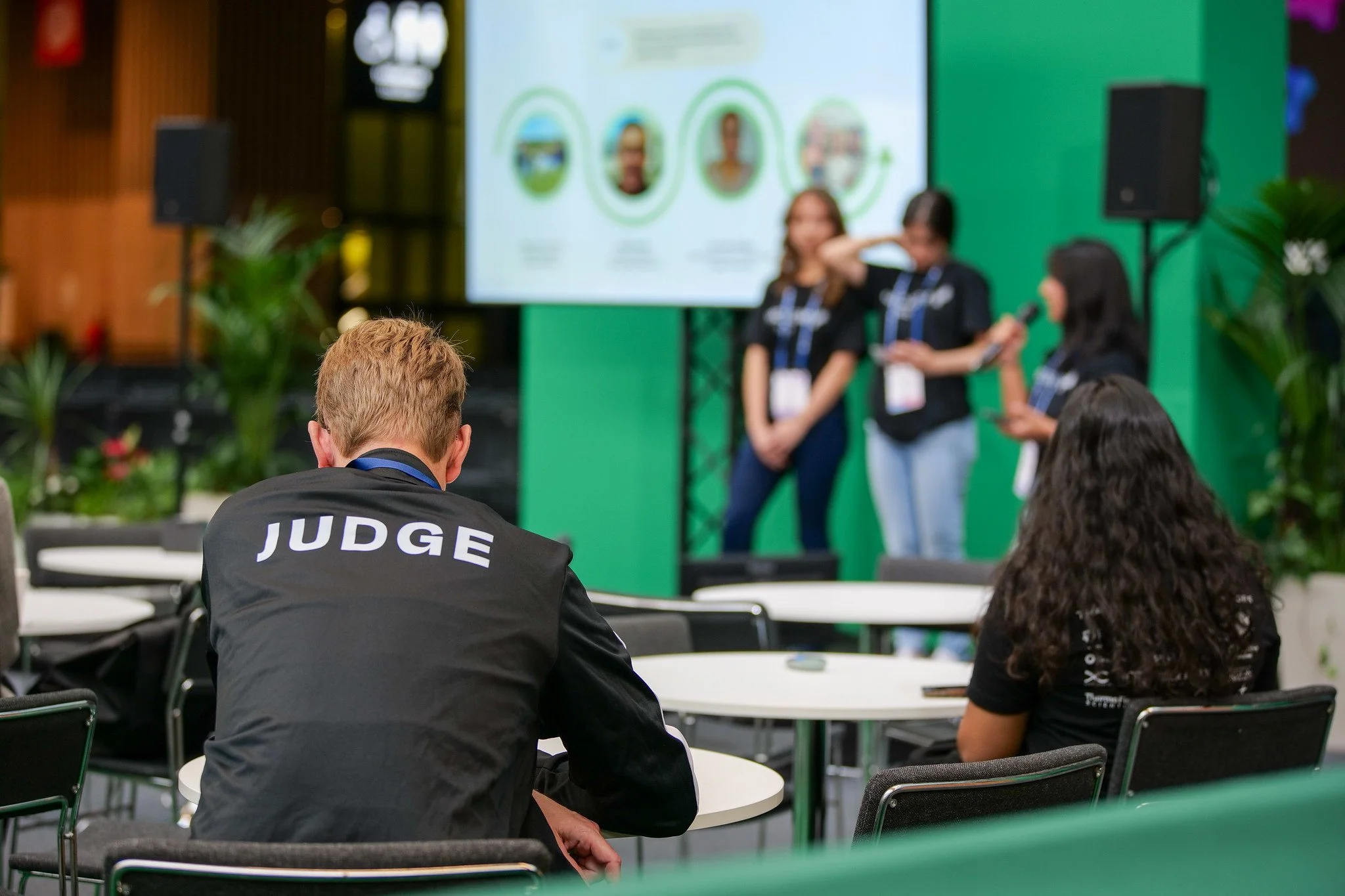From beer and yogurt to spider silk and aerogel: biology makes cool things
by Linda Kahl and Abigail Sison
“We’re 250 years into the industrial revolution, which is about being good at energy. We’re 70 years into the computer revolution, which is about being good at information. Now we’re at the beginning of the next revolution, which is about being good at matter, and the best tool for that is biology.”
Biomanufacturing, or the use of biological systems to produce valuable products, has roots that can be traced back to ancient times. Although the term “biomanufacturing” was not used, civilizations across the world discovered and used biological processes for various purposes.
One of the earliest forms of biomanufacturing, fermentation, was used by the Sumerians, Mesopotamians and Egyptians to brew beer at least as far back as 6000 BC. Photo by Poojitha Prasad on Unsplash.
One of the earliest forms of biomanufacturing, fermentation, was used by the Sumerians, Mesopotamians and Egyptians to brew beer at least as far back as 6000 BC. Fermentation was also used by the Egyptians, Greeks, and Romans to produce wine and other alcoholic beverages. Chinese civilizations fermented soybeans to produce foods like soy sauce, tofu, and fermented black beans; and in India, fermentation was used to produce yogurt and other fermented dairy products. Although these civilizations may not have understood the underlying microbiological processes, their observations and techniques laid the foundation for the development of modern biomanufacturing.
Today, biomanufacturing is used for many valuable products – from foods and textiles to solvents and pharmaceuticals. Yet, the majority of industrially produced chemicals and materials are still derived from fossil fuel-based resources. As we enter the next revolution of “being good at matter”, synthetic biology offers the opportunity not only to improve biomanufacturing to replace fossil fuel-based processes for existing products, but also to make new products under conditions that were previously impossible.
Today, biomanufacturing is used for many valuable products – from foods and textiles to solvents and pharmaceuticals. Photo by Roberto Sorin on Unsplash.
Project Inspiration
At iGEM, the Biomanufacturing Village brings together teams that are using synthetic biology to biomanufacture innovative and useful products.
Here are some of the products made with biology from iGEM teams:
COM ON!
CAU_China 2022 (China) engineered Pseudomonas fluorescens for Bacteria-Induced Mineral Precipitation to replicate a natural calcium oxalate film that can be used to protect stone cultural relics. Gold Medalist, Winner Best Biomanufacturing Project, Undergrad Division.
HESTIA
EPFL 2022 (Switzerland) developed HESTIA (Hydrophobic E.coli-based Sustainable Thermally Insulative Aerogel), a synthetic biology-based, modular, high performance insulation material that can save energy and, being fully biodegradable, reduce the environmental impact of insulation waste. Gold Medalist, Nominee Best Biomanufacturing Project, Overgrad Division.
BionExe
Exeter 2022 (United Kingdom) combined the highly conductive reduced graphene oxide (rGO), with strong, biocompatible silk proteins to produce a biocomposite – BionExe – that can be used as an insertable graft to increase the speed and extent of nerve regeneration in people suffering from peripheral nerve injuries. Gold Medalist, Nominee Best Biomanufacturing Project, Undergrad Division.
MonChassis
WWU_Muenster 2022 (Germany) overcame the limitations of plant extraction and chemical synthesis methods for producing monoterpenoids by establishing an adaptable platform – MonChassis – to biomanufacture verbenone, which is used to fight bark beetle and contributes to the conservation of forests. Gold Medalist, Nominee Best Biomanufacturing Project, Overgrad Division.
PRYSM
NUS_Singapore 2021 (Singapore) developed an optogenetically controlled yeast chassis and an open-source bioreactor to produce Human Beta Defensin, as an example antimicrobial peptide that could be applied as a bio-bactericide/fungicide in farms. Gold Medalist, Winner Best Biomanufacturing Project, First Runner-up for the Grand Prize, Undergrad Division.
Reshape
DTU-Denmark 2020 (Denmark) improved the efficiency of bio-based production processes by creating a synthetic biology toolbox that focuses on mycelial morphology and secretion in Aspergillus niger, thereby increasing the economic incentive for biomanufacturing and decreasing reliance on oil-based substrates in the chemical industry. Gold Medalist, Winner Best Biomanufacturing Project, Overgrad Division.
Team DTU-Denmark 2020’s project design for biomanufacturing using Aspergillus niger.
S.P.L.A.S.H
Leiden 2019 (Netherlands) engineered S.P.L.A.S.H - Suckerin Polymer Layer to Achieve Sustainable Health - a hydrogel made from a novel biomaterial recently found in the Humboldt squid that could be used as a donor skin substitute to improve the prognosis for burn wound victims by preventing infections and promoting skin healing. Silver Medalist, Winner Best Biomanufacturing Project, Overgrad Division.
Paper Transformer
ECUST_China 2019 (China) developed the Paper Transformer, a biological system that can manufacture composite materials to improve the properties of recycled paper when mixed into pulp, thereby enhancing paper quality and increasing the economic incentive for recycling paper. Gold Medalist, Winner Best Biomanufacturing Project, Undergrad Division.
To Bee… Hornet To Bee
Poitiers 2019 (France) designed a new metabolic pathway in bacteria to produce molecules that specifically attract the Asian hornet, and can be used to reduce the threat posed by this invasive species to the natural bee populations needed for pollination of plants, without compromising the environment. Gold Medalist, Nominee Best Biomanufacturing Project, Overgrad Division.
Phactory
Munich 2018 (Germany) engineered Phactory – a cell-free molecular assembly line for the modular composition of bacteriophages that can be used to treat bacterial infections without creating antimicrobial resistance. Bronze Medalist, First Runner-Up for the Grand Prize, Winner Best Biomanufacturing project, Winner Best Entrepreneurship, Winner Best Software, Overgrad Division.
Cockroach Terminator
SZU-China 2018 (China) designed a fungal cockroach terminator system based on Metarhizium anisopliae that can be used to control invasive cockroach populations in an efficient and environmentally friendly manner. Gold Medalist, Second Runner-Up for the Grand Prize, Winner Best Manufacturing Project, Winner Best Model, Undergrad Division.
Myco for Mars
Stanford-Brown-RISD 2018 (United States) explored the use of fungal mycelium, the vegetative structure of fungi, as a light-weight, durable material that could be used to create biodegradable, self-growing structures made of fungi on Earth and other planets. Bronze Medalist, Nominee Best Manufacturing Project, Undergrad Division.
Applying the tools of synthetic biology to biomanufacturing opens up a wealth of new possibilities for greener alternatives to fossil fuel-based manufacturing, and creating new bio-based materials with applications in agriculture, health, pest control, cultural relic preservation, and even space!
Be sure to check out the iGEM Biomanufacturing Village at the 2023 Grand Jamboree to see the latest advances in biomanufacturing!
iGEM Teams should submit your iGEM Village choices by June 29, 2023! competition.igem.org/deliverables/village-selection
Also related: Industrial Scale-Up Village
Cover Photo by Terri Bleeker on Unsplash.
















